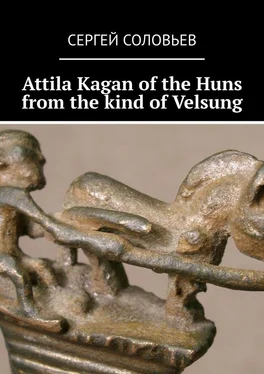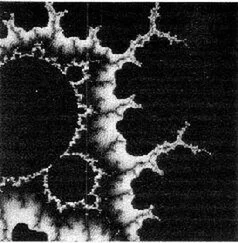In the graves of Scythians and Sarmatians there are numerous finds of geese-swans, and later on the Volga, such figures were hung from bracelets worn on the deceased
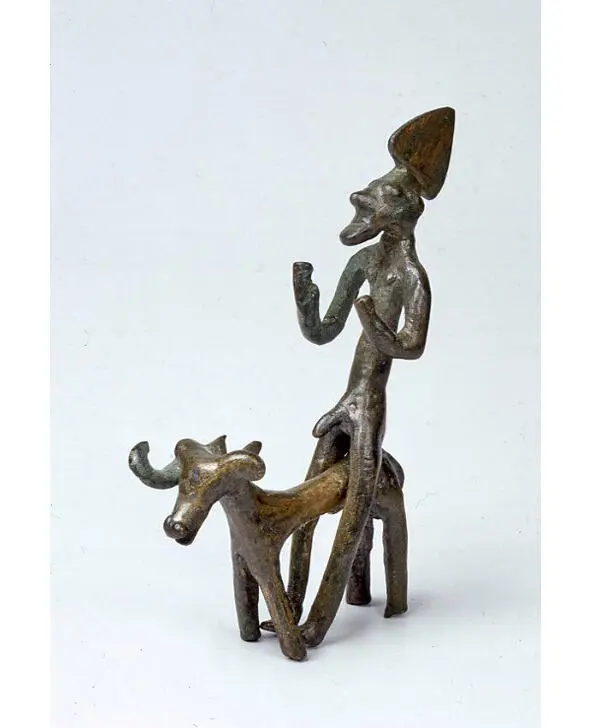

Male Deity in Wahane Aries, Koban Culture

Sarmatians. A feminine deity riding a lioness, probably Durga. GIM, Moscow
Wahana (to sit down, ride something”) – in Indian mythology – an object, a fictional creature or animal used by the gods as a means of transportation (usually a mount). Mounted animals can be either real or mythical, or a mixture of both types. Wahana is a manifestation of the brute energy of the deity, its totem is a symbol of the deity, indistinguishable from whose mount it is (Nandi, the bull, the wahana of Shiva, personifies power, etc.). Wahans, in addition, increase the power of their masters (Durga could not defeat the demon Mahishasura without the help of her wahana – the lion Manashthala) and denote evil forces and vices that are commanded or suppressed by the deity (Skanda, whose wahana is a peacock, has power over vanity.
That is, there is a possibility that the Aryans received the name from their sacred animal Aries (ram), and the Huns (Hans) from their farna, goose (Hans).
Huns-gans (geese). Tales, tales of geese, as the sacred animals of this people
Abashevskaya and Andronovskaya cultures, undoubtedly connected and being the culture of the Hans-Huns, began to develop in the Ob River basin, from where they spread up to Hellas and Denmark, China and India, but most of the people of this culture remained in the vastness of Eurasia, leaving the foundation of the present people of Russia.

The cult animal, along with the bear, was the goose-swan, mentioned in the tales of the Russian people inextricably. However, similar, even more likely, identical tales are observed in Pomerania and Denmark and Sweden, where the Huns-Hans reached the Bronze Age.
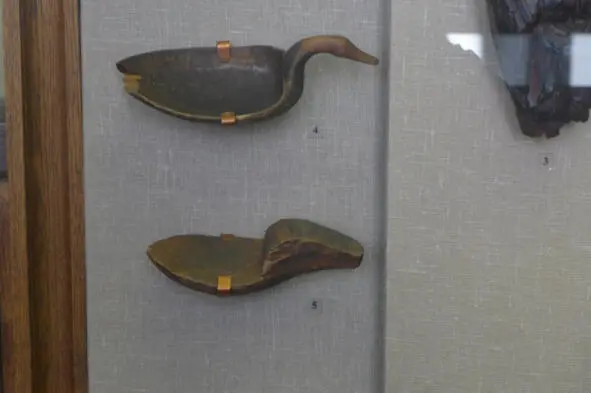
The name of this tribe itself is associated with a goose, because in German it is Hans-goose. And it is natural that tales and legends with a goose are numerous-Geese-Swans appear in many tales. But earlier, the goose was the subject of a cult – this animal, as in the myths of Apollo, who was also a native of the North, carried the soul of the deceased to the Land of the Dead. This is evidenced by the numerous statuettes of these birds in the graves of Scythians, Sarmatians and Huns. But in the Bronze Age, geese were depicted schematically, in the form of a meander.
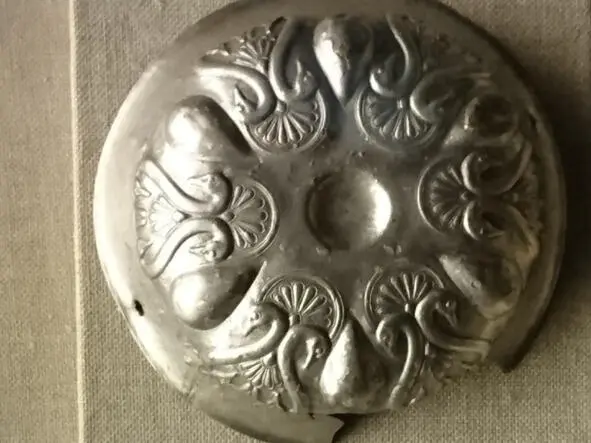

The Saks from Altai, the Sarmatians, also accompanied the goose in the afterlife. Obviously, judging by the tales, he had to fly away with the soul of the deceased to his ancestral home, the distant North. In Moksha, Gus-matzi, -hh, the latter is close to the word HUNT.
Among the Saks, the swan was also a sacred creature, whose function was to deliver the soul of the deceased to the afterlife. Recall the team of Apollo swans.
Extra evidence that the Huns-Hans reached Hellas in the third millennium is also proved by the goose-swan cult associated with the cult of Apollo and Artemis.
Among the many living attributes of Apollo, the swan rightfully occupies the main place. The popularity of the Apollo and Swans motif has been attested throughout antiquity. This beautiful proud bird accompanies the divine twins Apollo and Artemis “the most beautiful inter-glorious descendants of Uranus” (Hes. Theog., 920). Sometimes a “golden Aphrodite” or her tomboy Eros appears on a swan (and more often on a goose, judging by a vase), but this is already late Hellenism).

Poets and philosophers often call the swan the bird of Apollo (H. h., XXI. 1 sq; Sapph. Frg. 147b, Plato, Phed., 85b.), “The vocal singer of God”, “the most melodious of birds” (Call. Hymn., II, 5; IV, 249), “the favorite of the muses” (Eur. Ipphig. T., 1103—1105), “the Pythian and Delosian” (Aristoph. Av., 870). “The long-necked joy of Apollo” calls the swan Bacchillides (Dyph., 16). The motive of the “swan song” was not known in antiquity; Homer, Hesiod, and also in Homeric hymns do not have it. On the contrary, the swan in the sacred places of Apollo constantly sings, glorifying the birth of God on Delos (Call., II, 250—254), or portending his appearance (II, 5; Aristoph. Av., 769—770), or singing in the land of Hyperboreans hymns during the rites. According to Elian (De nat. An., XI, 1), at that time clouds of swans flocked from the Riphean mountains, “they fly around the temple, as if cleansing it with their flight,” and then gracefully sit on the fence of the temple, “representing a sight majestic in multitude and beauty. “When the singers begin to praise God accompanied by the citharists, “then the swans together join in singing and in no way do they sing awkwardly or inaccurately”, masterfully performing a melody, like experienced singers, led by a choreographer. And all day long, “the aforementioned feathered singers collectively glorify and glorify God.”
Belief in the living, evil dead, silver weapons against them
There are extremely interesting exhibits in the State Historical Museum, these are the silver tips of copies from the Borodino treasure, and obviously, the more ancient silver tips belonging to the Seima-Turbino Culture.

SHM exhibits, Seminsky-Turbinskaya culture

Silver spear tip Borodino treasure, silver spears. SHM
The detachments of warriors with silver spears are mentioned by Arrian at Alexander the Great and are called argyraspids, from argyr – silver, and speyra-spear, to call them silver-cut is a clear mistake. A detachment of soldiers with silver spears was also owned by the Persian king, according to the testimony of Quintus Curtius Rufus. “Behind the chariot were 10 thousand spearmen with richly decorated silver spears.” The squires of Moscow’s grand dukes and tsars – the market men – were remembered by all foreign guests of the Kremlin. During the ceremonial receptions of foreign ambassadors, they stood on both sides of the royal throne, dressed in ceremonial clothes, with silver hatchets. And here, too, silver weapons, and everything somehow coincides, one to one. If we recall the property of silver, which was considered important in antiquity, to drive away or kill evil spirits.
Читать дальше
